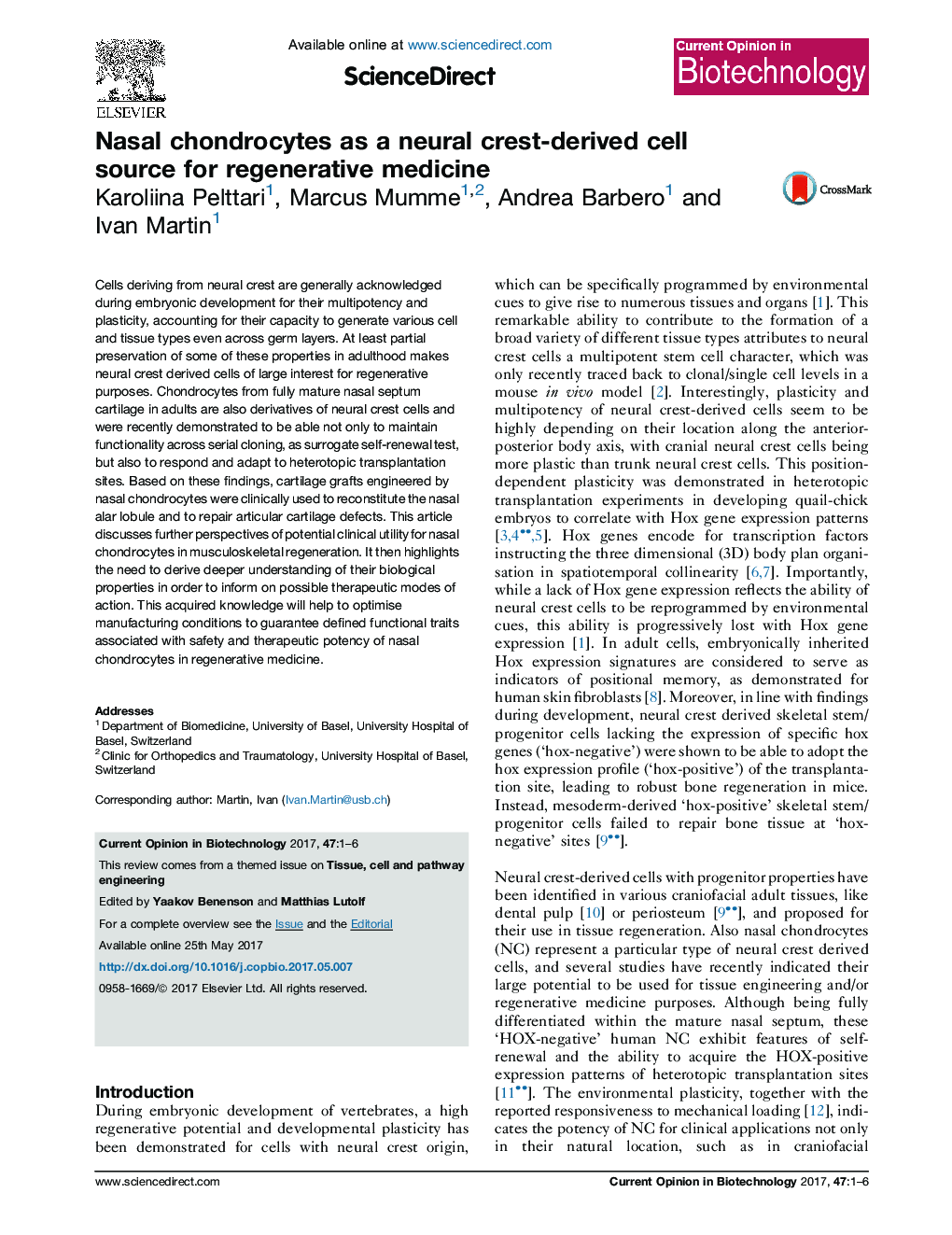| Article ID | Journal | Published Year | Pages | File Type |
|---|---|---|---|---|
| 6451415 | Current Opinion in Biotechnology | 2017 | 6 Pages |
•Developmental plasticity of neural crest cells is partly maintained in their adult derivatives.•Hox-negative nasal septum chondrocytes (NC) adapt to heterotopic implantation sites.•Grafts engineered by NC repaired alar septum and articular knee cartilage in patients.•NC are currently being explored for further fields of application.•Requirement to understand interactions between graft and environment at transplantation site.
Cells deriving from neural crest are generally acknowledged during embryonic development for their multipotency and plasticity, accounting for their capacity to generate various cell and tissue types even across germ layers. At least partial preservation of some of these properties in adulthood makes neural crest derived cells of large interest for regenerative purposes. Chondrocytes from fully mature nasal septum cartilage in adults are also derivatives of neural crest cells and were recently demonstrated to be able not only to maintain functionality across serial cloning, as surrogate self-renewal test, but also to respond and adapt to heterotopic transplantation sites. Based on these findings, cartilage grafts engineered by nasal chondrocytes were clinically used to reconstitute the nasal alar lobule and to repair articular cartilage defects. This article discusses further perspectives of potential clinical utility for nasal chondrocytes in musculoskeletal regeneration. It then highlights the need to derive deeper understanding of their biological properties in order to inform on possible therapeutic modes of action. This acquired knowledge will help to optimise manufacturing conditions to guarantee defined functional traits associated with safety and therapeutic potency of nasal chondrocytes in regenerative medicine.
Graphical abstractFigure optionsDownload full-size imageDownload high-quality image (150 K)Download as PowerPoint slide
